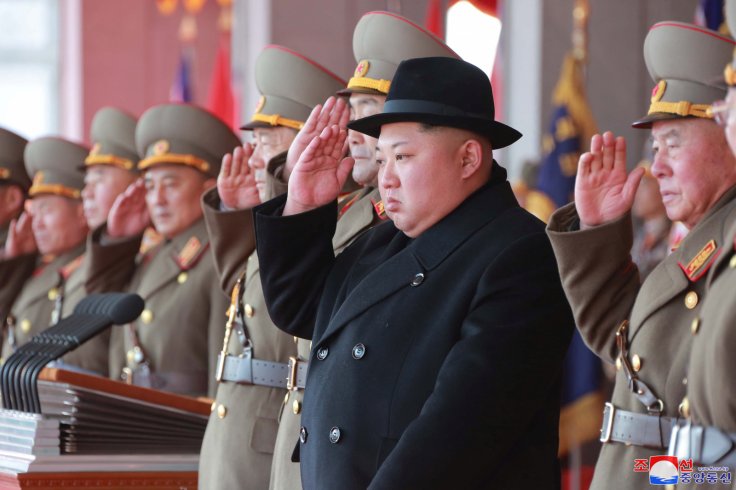North Korea showed off a giant inter-continental ballistic missile (ICBM) at its annual military parade on Saturday (October 10). The missile that moved through the streets of Pyongyang on an 11-axle transporter vehicle during the early hours of Saturday has long-range capability, including striking the U.S.
While showing off its missile capabilities isn't new for country's Supreme Leader Kim Jong Un, in the two previous years, such items were absent. Thus, it brings to the question of why now.
To answer it briefly, it's because of the upcoming U.S. Presidential Election scheduled for November 3. In the previous two years, Pyongyang had been involved in a trilateral dialogue with arch-enemy South Korea and the U.S. But with the 2019 Vietnam Summit failing to yield any result, the tensions among the three have escalated once again in the last few months.
Kim wanted to showcase his strength but instead of sticking the rhetoric of issuing threats, he said the missiles were for self-defense and would "never be abused or used first under any circumstances." The parade was to mark the 75th anniversary of North Korea's ruling Workers' Party.

New ICBM
The new missile, as per analysts, is an upgraded and enlarged version of the Hwasong-15, North Korea's longest-range missile that is capable of hitting the U.S. According to the Director for Non-Proliferation and Nuclear Policy at the International Institute for Strategic Studies, Michael Elleman, the new ICBM has the capability of carrying 2,000 to 3,500 kilograms payload to any part of North America.
That makes the missile more powerful than Soviet R-16 or R-26 ICBMs, Reuters reported. As per experts, the new ICBM can carry multiple independent re-entry vehicles (MIRVs), enabling it to strike more targets at once. That means interception will be difficult. There was also Pukguksong-4, North Korea's new submarine-based ballistic missile.
According to former U.S. intelligence officer for North Korea, Markus Garlauskas, by showing off the new ICBM, Pyongyang wanted to dismiss any doubts regarding its capability to strike the U.S. It was also to show that North Korea was preparing to test more capable missiles. "If the Hwasong-15 could carry a 'super-large' nuclear warhead to anywhere in the U.S., then the natural question is what can this larger missile carry?" he said.
The TEL has 11 axels, two more than Hwasong-15 TEL which is about 22m. These large vehicles are designed to be modular, so two additional axels, roughly 1.8 -2.0 m in length, were likely inserted, giving a new length of 25-26 m. The missile is about the same, 25-26 m long. 2/n
— Michael Elleman (@EllemanIISS) October 10, 2020
Another Missile Test Coming?
Lee Ho Ryung, a researcher at Korea Institute for Defense Analysis, told the National Public Radio that such ICBMs might not be operational and just replicas or mock-ups. It was a low-risk approach to send a message that test-firing a missile that could provoke countries like the U.S., Japan and South Korea. But with failing diplomatic talks with the U.S. and the South, Kim said earlier this year that there would be new additions to his arsenal and testing nuclear weapons.
"They're not as likely to conduct a test launch that would provoke countries such as the U.S because they want to leave room for diplomacy," Lee said.
Since the test-firing Hwasong-15, North Korea hasn't launched an ICBM. During this period, North Korea tested several short-range missiles. Although those are not designed to reach the U.S., those could disseminate U.S. bases in the South where over 28,500 American troops are stationed.

Hence, it is widely expected that Pyongyang will test-fire the larger missile in the coming days, probably before November 3 to send a message to U.S. President Donald Trump and his Democratic opponent Joe Biden. "It seems highly unlikely they would try to deploy this system without testing it at least once," said Jenny Town, a fellow at the Stimson Center.
That way, Kim can also divert attention from the flailing economic conditions in the North. Since the Coronavirus pandemic began, the country's borders with China have remained closed while two typhoons and floods have devastated the country within a short period of time.
There was also a severe food shortage in the country due to that reason, meaning Kim failed to meet the five-year economic plan he put forward. By showing military strength, Kim can sway public support, albeit, momentarily.









